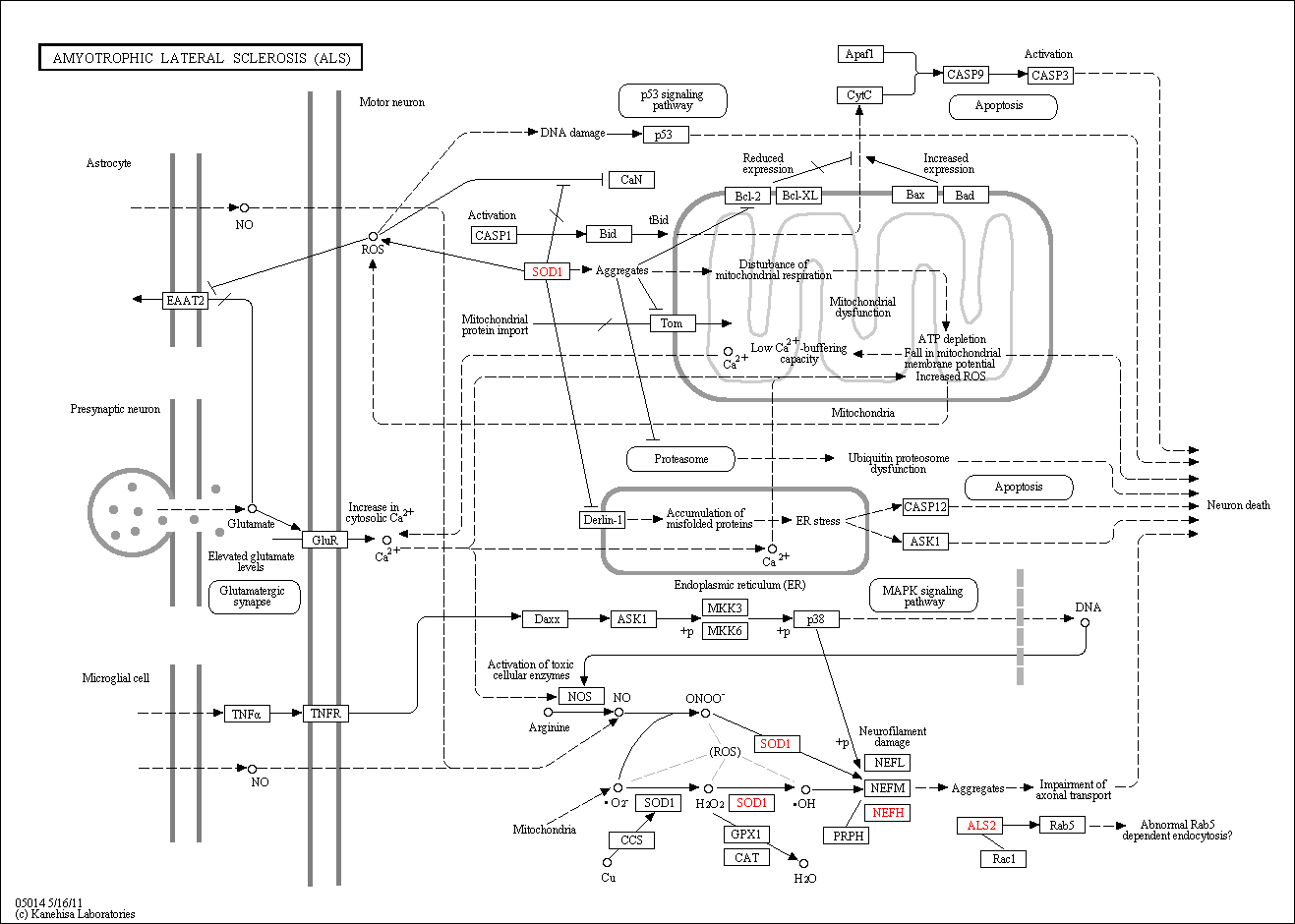Amyotrophic Lateral Sclerosis (ALS)
Description: Amyotrophic lateral sclerosis (ALS) or Lou Gehrig's Disease, is a neurodegenerative disease that affects the nerve cells or motor neurons of the brain and spinal cord. Degeneration of these nerve cells eventually leads to death because when the nerve cell dies the brain no longer has as much control over muscle movements. This could ultimately cause individuals infected with the disease to become paralyzed and lose function of bodily organs.
Early symptoms of ALS often include weakness in speech, muscles, and the inability to breath and swallow. Additional early symptoms include cramping and stiffness of muscles. Over time, muscles also begin to look smaller because they are no longer receiving the necessary messages required to function. No test can provide a definite diagnosis of ALS and diagnosis is primarily based on symptoms. To be diagnosed with ALS, individuals must have symptoms of both lower and upper neuron damage.
Overall, ALS affects mostly the motor neurons or nerve cells and in most cases the disease does not hinder a patients mind or memory. It also does not affect one's ability to taste, hear, see, or feel/touch. Progression of the disease ultimately depends on each individual. There is no treatment that will cure ALS, but the drug Riluzole helps to reduce the damage to nerve cells. Note, Riluzole does not reverse the damage that has already been done to nerve cells or neurons. Other treatments for ALS are designed to relieve symptoms and improve one's quality of life.
ALS is a disease that ultimately causes complete muscle failure and respiratory problems, which leads to death. People between the ages of 40-60 are more likely to obtain the disease which has a median survival rate of 20-48 months.
No one really knows or understands the causes behind ALS but it has been linked to neurotoxin exposure from pesticides and BMAA. It has also been linked genetically to 5% of cases while the majority of cases have no known cause.

Related BMRB Molecules
For complete information about pathway, see KEGG [map05014]
